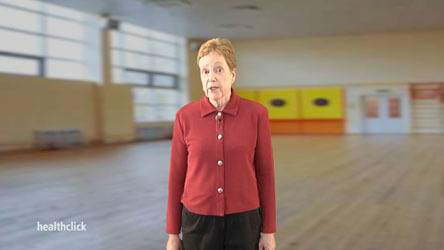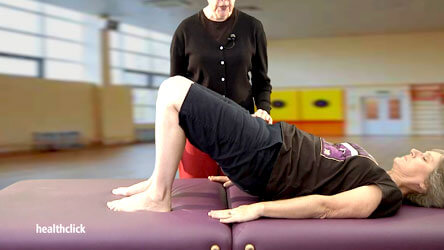Post Surgical Treatment of the Cervical and Lumbar Spine
Learn something now! - Watch the Online CEU Course Trailer

All Access Online CEU for PT, PTA and OT for $189
BEST VALUE - Includes this course and all our online courses
Subscribe Todaytheaters Purchase Now, Instant Online Course Access
Post Surgical Treatment of the Cervical and Lumbar Spine
$89.95
- CE Hours: 5.0 hrs, .5 CEU
- Delivered: Online
- Instant Online Access to Course Material for 365 days, Videos, Online Test and Printable Course Certificate
- No auto-renewal for this option
All Access Online CEU for PT, PTA and OT
$189
All Access Online CEU for PT, PTA and OT Subscription
1 Year Access with Annual Renewal
State specific course completion certificates.
Chat support
Prices are in US dollars- 12 months of access to all online ceu courses, course tests and state approval certificates.
- Meet all your CE requirements. Pre-approved for PT, PTAs in AK, AL, AZ, CA, CO, CT, DC, DE, GA, HI, IA, ID, IL, IN, KS, MA, ME, MI, MO, MS, MT, NC, ND, NE, NH, NM, NV, NY, OR, PA, RI, SC, SD, TN, TX, UT, VA, VT, WA, WI, and WY.
- AOTA approved.
- Designed for Physical Therapists, Occupational Therapists, Athletic Trainers and Assistants.
- Access to future courses and content.
- Start, stop and resume, right where you left off in a course.
- Real patient interviews.
- Medical expert contributors.
- 3D anatomy and medical illustrations.
- Easy to use learning system for fast access to your courses.
- Award winning content.
- Top instructors teaching evidence based skills and techniques.
Why should a physical therapist, occupational therapist, or athletic trainer take this post-surgery cervical and lumbar spine continuing education course?
Millions of doctor visits related to neck and back pain progress to surgical intervention. Some standard surgical procedures include; discectomy, vertebroplasty, artificial disk replacement, and spinal fusion. Specific post -surgical protocols utilized by top physicians enhance healing and recovery to function. Physical therapy interventions throughout the pre and post -surgical processes promote a conducive environment for proper healing.
Successfully rehabilitate the postoperative spinal surgical patient by enhancing your understanding of surgical approaches and techniques for the cervical and lumbar spine, including microdiscectomy, PLIF, DLIF, TLIF, ACDF, and posterior cervical fusion.
Learn manual therapy techniques, including neural tensioning and mobilization of the sciatic, femoral, median, ulnar, and radial nerves in order to optimize the surgical outcome of the cervical and lumbar spine post surgical patient.
Rehab clinical tools instructed in post-surgery cervical and lumbar spine rehabilitation course to enhance your functional outcomes.
- Insight into the surgical process with an extensive interview with a board certified neurosurgeon
- Treatment of the post surgical spine patient with discussion and demonstration of specific rehabilitation exercises and treatment protocols
- The optimal, evidence based treatment protocols for the post surgical spine patient
Specific instruction that will enhance your understanding and ability to deliver better patient care.
- Perform post operative spine evaluations for the various stages of postoperative progression
- Specific case studies are discussed focusing on kyphoplasty, vertebroplasty, artificial disk replacement, lumbar spine fusion and lumbar laminectomy for spinal stenosis
- Surgeons discuss different types of surgical procedures, the pros and cons, and the evolution of treatment
Two post surgical rehab courses that compliment one another.
- This course provides additional information and compliments the course: Post Surgical Evaluation and Treatment of the Cervical and Lumbar Spine
Professional Accreditation
This is an intermediate level course applicable for PT, PTA, AT. Physical Therapy Accreditation: For specific state information, use the accreditation verification menu and select your state of license. Athletic Trainers: BOC provider #P2047, category A. This course has not been submitted for Evidence-Based BOC approval..
fact_check Accreditation Verification
Online CEU Course for PT, PTA, OT State Accreditation
Learn from the Expert - Carol McFarland, PT, PhD, OCS

Carol McFarland, PT, PhD, OCS, is a 1975 graduate of Boston University with a BS in physical therapy. She completed her MS in kinesiology at University of Texas at Tyler in 1986 and then received her Orthopaedic Clinical Specialist certification from the American Board of Physical Therapy Specialties in 1990, which was renewed in 1998. She practices in an outpatient spine center in Texas and has worked closely with the neurosurgeons in this practice since 1992. She collaborated with therapists throughout east Texas to develop rehabilitation protocols specifically for follow-up to many of the surgical and injection spine procedures. She presented these protocols through the Texas Physical Therapy Association and American Back Society several times, and published a book on the postsurgical protocols for the lumbar spine.
Course Objectives

- Understand and be able to perform the exercises used for spine stabilization in the post surgical spine patient
- Create a balance routine for retraining proprioception and muscle control in the lower extremities
- Integrate exercise bands into appropriate exercises routines in order to intensify the affect on targeted muscle groups.
- Perform interim testing to assess rate and path of program progression, as well as provide quantitative information for the physician and insurance provider.
- Develop a post surgical Cervical spine stabilization exercise program
- Build a comprehensive exercise program that both stabilizes and strengthen key muscle groups in the post surgical spine patient
- Explain the use of spinal surgical procedures such as lumbar microdiscectomy, kyphoplasty and vertebroplasty, artificial disk replacement and anterior cervical fusion.
The Surgeon’s Perspective

- Introduction to the interview with Dr. Charles Gordon, Board certified neurological surgein
- After a lumbar microdiscectomy, do you feel the annular wall is vulnerable, and if so for how long?
- How do you determine if a patient needs a microdiscectomy vs a laminectomy?
- Are there other procedures for spinal stenosis that are less invasive than lumbar laminectomy?
- When are lumbar fusions indicated in place of non fusion procedures?
- How do you decide on the approach of a fusion, anterior vs posterior, and how do you decide on the need to do interbody fusion vs a posteriorlateral fusion?
- What is your opinion about bone augmentation, bone stimulators or bone growth substances, and do you feel they are important?
- Regarding total disc replacements: who are the candidates for these procedures?
- Do you feel that the anterior approach to the total disc replacement is an advantage or not?
- Are there particular precautions we should observe with therapy following a total disc replacement?
- With a total disc replacement (lumbar or cervical), is it possible to remove the prosthesis is there is a problem?
- Anterior cervical discectomy and fusion: description of the surgery
- Anterior cervical fusion: reason for use of anterior plate fixation
- Kyphoplasty and vertebroplasty: surgeon's opinion on benefits of these procedures vs conservative care for compression fractures
- Stem cell research for spine procedures
- DNA analysis of patients regarding genetic spine disorders
Treatment of the Post Surgical Spine - Spine Stabilization Exercises

- Introduction to Burke, Phelps and Sizer functional spine stabilization program and some example exercises
- Basic segmental stabilization: alternate arm reach from Burke, Phelps and Sizer
- Squat with arms ups from Burke, Phelps and Sizer
- Standing hip abduction for balance and postural strengthening
- Standing hip extension for balance and postural strengthening
- Heel raises for balance and endurance, combined with postural cuing
- Static lunges demand rotary stabilization and balance
- Lunges with forward step as a progression for strength, balance and rotary stabilization
- Wide base squat with alternate heel raise to target soleus as well as spine and hip stabilizers
- Balance routine: 4 different movements with single leg support challenge balance, endurance and posture
- Standing traditional vestibular exercises that are helpful for spine stabilization, postural strength, and balance
- Using exercise loop to increase intensity of stabilization exercise: hip abduction example
- Using theraband loop to increase intensity of stabilization exercise: targetting hip extensors, then hamstrings
Treatment of the Post Surgical Spine Patient - Testing for Spinal Stabilization

- Interim Testing System for Spinal Stabilization: Hip extensor endurance with bridging
- Interim Testing System for Spinal Stabilization: Abdominal testing maintaining neutral spine
- Interim Testing System for Spinal Stabilization: Abdominal testing using curl ups with Saal protocol
- Interim Testing System for Spinal Stabilization: Quadruped testing for back extensor endurance, as well as confirming segmental stabilization capability
Treatment of the Post Surgical Spine Patient - Spine Stabilization and Mobilization

- Cervical spine stabilization exercises: segmental and global stabilization exercises
- Work for recruitment of posterior shoulder girdle for postural strengthening: scapular adduction using unilateral then bilateral shoulder horizontal abduction or extension
- Work for recruitment of posterior shoulder girdle for postural strengthening: lat pulldown
- Opposing tricep extensions combined with crown up posture for spine stabilization
- Bridging exercise using the gymastic ball
- Side plank exercises using gymnastic ball
- Example prone exercises for spine stabilization using gymnastic ball
- Thoracic extension and scapular muscle control work in chair: 1) scapular depression with upper shoulder girdle stretch; 2) thoracic extension self mob; 3) scapular depression/ adduction using chair back resistance
- Seated hamstring stretch with attention spine posture
- Seated hip rotator stretching
- Seated trunk flexion stretch to help patients reduce lumbar spinal stenosis symptoms
- Standing hip flexor stretch
The Post Surgical Spine Case Studies

- Therapist findings after lumbar microdiscectomy
- Therapist findings after lumbar laminectomy for spinal stenosis
- Working with patients in the hospital after lumbar spine fusion, part 1
- Working with patients in the hospital after lumbar spine fusion, part 2
- Working with patients in the hospital after lumbar spine fusion, part 3
- Artificial disc replacement (ADR), also known as total disc replacement
- Artificial disc replacement (ADR), also known as total disc replacement, part 2
- Description of our recent clinical trial of early PT intervention for anterior cervical fusion
- Kyphoplasty and vertebroplasty need for follow up
- Testing to justify therapy need, after kyphoplasty and vertebroplasty. Suggested program components
Course Test - Evaluate your knowledge

- Use the Healthclick proprietary online education system which provides the online student with:
- Worldwide access to high definition video, anatomical animations and images, and written information
- The highest quality film in the industry, you can see the difference!
- Stop and resume within a course, the Healthclick system will optimize your course based on your device, connection and remembers where you left off.
- Real-time course updates. We are always adding to each courses, updating content, adding animations, these are not static courses!
- Evaluate your knowledge with the course test on any device.
- Print your state course certificate for CE credit.
- Take the online test as many times as need in order to achieve a 70 % or greater score.
Responsible CME® - Online CEU Course Testimonials
67.225.255.111I will recommend this course to my colleagues and use all of these stability exercises and interim tests on Monday. Great course for all levels of practice. -- Janelle, PT
This course gives you immediate hands on information and techniques that you can apply with your patients. -- Kari, Occupational Therapist
Practical information I can use every day. Presented in a logical and interesting way. -- Miira, PT
Intuitive, self-paced, user-friendly. I appreciated both the practical information from the PT and the interviews with the neurosurgeon. This info. will benefit me regardless of which setting I work. I will definitely recommend to my colleagues. -- Jennifer, PTA
A good basic to intermediate CEU for understanding the approach towards patients with recent surgeries for a better outcome in regaining overall spinal strength and stability. -- Chad, PTA
Good beginner to intermediate course that touched on the basic with also giving some new information. -- Amanda, PTA